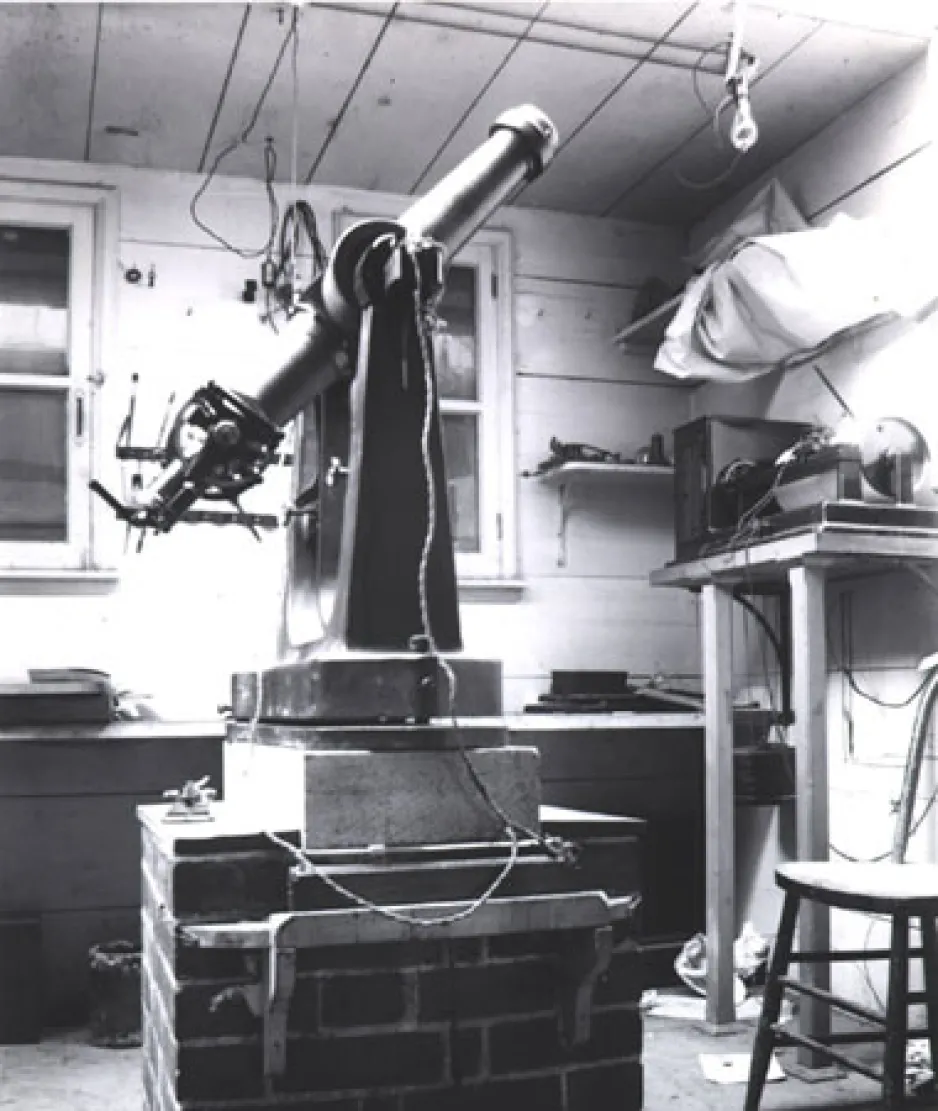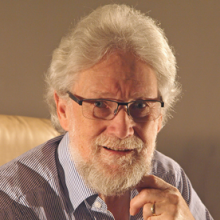The Founding and Construction of the Dominion Observatory, part 1

Foreword
This Collection Profile was originally written in 2005 by Dr. Brooks to commemorate the 100th Anniversary of the Dominion Observatory. It will be released weekly as a four-part series of articles.
The Observatory remains a notable landmark on the grounds of the Central Experimental Farm National Historic Site of Canada, a short walk down the street from the Canada Agricultural and Food Museum in Ottawa. The 15-inch equatorial telescope remained the primary instrument there from 1905 until it was moved to the Museum in 1974.
Much has happened since the article was first published. In 2014 the Canada Science and Technology Museum was closed, and in 2016, the Dominion Observatory’s telescope was removed from the Museum's Helen Sawyer Hogg Observatory. Ingenium's new Collections Conservation Centre now stands at the former site of the Observatory.
In 2017 the Museum's renewal project was completed, and re-opened its doors to wide public acclaim. In the Hidden Worlds exhibition, One Sky, Many Astronomies introduces indigenous perspectives and ways of knowing, based on many hundreds of years of observations of the night sky by Indigenous astronomers. There are now several telescopes on display, some for the first time ever. The Cooke & Sons telescope, a beautifully restored 6-inch refractor first installed in 1882 at the Toronto Magnetic and Meteorological Observatory occupies a central exhibit location, as does the Dominion Observatory's Brashear photographic telescope. In 2018, a small team of Ingenium conservators received an award by the Canadian Museum’s Association for their outstanding work on the Cooke Restoration Project.
Today, the Dominion Observatory’s 15-inch equatorial telescope is safely preserved in the Museum's long term collection storage. We hope that one day, Ingenium conservators will be able to treat this nationally significant instrument and restore it to its former glory. Then it too can stand alongside the Cooke and the many astronomical instruments you will read about as symbols of one of Canada’s strongest scientific disciplines.
Michel Labrecque, Assistant Curator
November 2018
"The Dominion Observatory is a Classified Federal Heritage Building because of its historical associations, and its architectural and environmental values".
The Founding and Construction of the Dominion Observatory, part 1
Introduction
Astronomy has been part of Canadian life for hundreds if not thousands of years. Among the Ojibwa of northwestern Ontario, Manitoba and Saskatchewan, some spiritual leaders had special knowledge of the stars and the planets that was used to guide the day-to-day affairs of their communities. Further west in Alberta, the Blackfoot left evidence of their probable use of stars and the Sun as signposts in the form of medicine wheels. These stone features, on an otherwise featureless prairie landscape, have spokes that appear to line up with particular stars or groups of stars. These spokes may have provided a means to direct aboriginal travellers.
Seventeenth- to nineteenth-century European navigators also had to rely upon the Sun, Moon and stars to find their way across the Atlantic to and within North America. With the aid of astronomical knowledge, they began to map the land and rivers to aid travel, note natural hazards on the travelled routes, and promote land settlement. Navigation, surveying and mapping relied critically on astronomy and continued to do so until recent years.
Early Observatories in Canada
The very first building constructed as an observatory in Canada was at Louisbourg, Cape Breton, but it was only used for a year before the astronomer, Joseph Bernard Chabert, returned to France in 1751. In the eighteenth and nineteenth centuries the British military, primarily the Royal Navy, also carried out astronomical observations to improve hydrographic maps in eastern and central Canada. In addition several observatories were built at universities, beginning with the University of New Brunswick in 1851, to instruct students in navigation, surveying and natural phenomena. By century’s end, astronomy was being taught as a scientific discipline in its own right.
Government astronomy in Canada, following Confederation in 1867, was primarily associated with surveyors who needed a means to determine the difference in longitude between their location and Greenwich, England, or Cambridge, Massachusetts—a very challenging exercise requiring highly accurate tables of the positions of astronomical objects and good astronomical instruments. Surveyors were hired by the Geological Survey of Canada (founded in 1841), the Hydrographic Survey (1880s), the Topographic Survey (1880s) and the Geodetic Survey of Canada (1909). Among other things, these astronomer/surveyors laid out boundaries between the United States and Canada, and between the Provinces.

This Troughton and Simms zenith telescope was used in the Dominion Lands Survey in Western Canada.
A Zenith Telescope of Historical Interest, 1872
Manufacturer: Troughton & Simms, London
Inscriptions: "T.S. 394" and on the baseplate, "Fo. 1"
Aperture: 2 1/2 inches
Focal length: 28 inches
Source: Energy, Mines and Resources Canada
Artifact no. 1972.0376
One of the earliest instruments in our collection associated with survey activities is the zenith telescope pictured at right. Made by one of the premier British instrument firms, Troughton & Simms, this telescope was used to measure when stars passed close to the zenith—the point in the sky exactly overhead. With this instrument one was able to determine latitude of the site and, if one had a chronometer to accurately maintain the time of a known location (Ottawa, Greenwich or Cambridge), one could also determine longitude. This zenith telescope was employed in the survey of the 49th parallel between western Canada and the United States.
The Cliff Street Observatory
In Ottawa, the Cliff Street Observatory (near the current Supreme Court of Canada building on Wellington Street) was constructed in the 1880s to house transit telescopes (1976.0300) and precise clocks to determine time and to act as a reference point for surveyors. But in 1898 one of the astronomers, Dr Otto Klotz, had a vision for a grander facility—a “national observatory.”

The Cliff Street Observatory, seen here about 1900 overlooked the Ottawa River near Parliament Hill.

Transit Telescope, ca. 1890
Manufacturer: Cooke & Sons, London
Source: Energy, Mines and Resources Canada
Artifact no. 1976.0300
The Cooke & Sons transit telescope was used at the Cliff Street Observatory from about 1890 until it was moved to the Dominion Observatory in 1905.

Otto Klotz (1852-1923) would see his vision come true as one of the founding astronomers of the Dominion Observatory.
Artifact Image Gallery
Additional Readings
Arthur Covington, A Zenith Telescope of Historical Interest, Journal of the Royal Astronomical Society of Canada, Vol. 55, No. 6, 1961.
John H. Hodgson, The Heavens Above and the Earth Beneath: A History of the Dominion Observatories, Energy, Mines and Resources Canada, 1989.
Richard Jarrell, The Cold Light of Dawn: A History of Canadian Astronomy, University of Toronto Press, 1988.
Otto Klotz, The Dominion Astronomical Observatory at Ottawa, Journal of the Royal Astronomical Society of Canada, Vol. 13, No. 1, 1919.
Parting Shot

The grounds near the Helen Sawyer Hogg Observatory during the Transit of Planet Venus event, June 7, 2012.





















